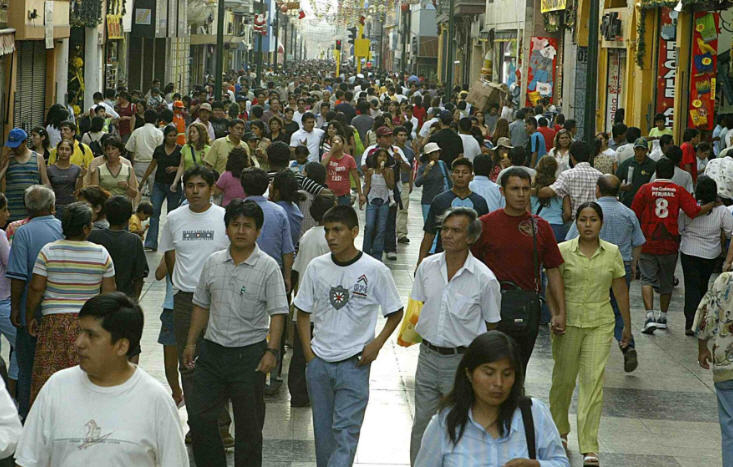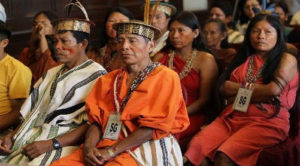
What is the population of Peru?
Peru’s population is now 31’237,385, according to the nationwide population and housing census taken in October last year.
Peru Population 2018
The figures, announced this past week by the National Statistics Institute, INEI, show the average population increase at 1% per year, down from the 1.6% rate ten years ago, in 2007, when the population was 28.2 million. In 2017, there were 49% men and 50.8% women.
The margin of error or omission is 5.9%.
This confirms the continuing trend, over the past 56 years, of a decrease in the population growth rate, said Francisco Costa, head of INEI. The trend is expected to continue for at least the next 10 years, according to Richard Webb, president of the 2017 Census advisory board.
Peru has the fifth largest population in South America, after Brazil, Colombia, Argentina and Venezuela (although given the number of people fleeing Venezuela due to the current political situation, statistics are no longer accurate).
There has also been a significant increase in the number of people living on the coast, now 58% in contrast with 54.6% in 2007. In 1940, only 28.3% of the population lived on the coast.
The number of people now living in the Andean highlands or sierra is 28.1%, some 600,000 less than 10 years ago, and the population in the jungle or rainforest has increased by 1.1 million to 13.9% of the population. In 1940, 65% of the population lived in the Andes and only 6% lived in the jungle.
In an interview with the business daily Gestion, Richard Webb said that figures show that people in the different regions are leaving the countryside for the towns. In the highlands people often move to nearby towns, either on the coast or in the jungle. And in the jungle, “one imagines people walking in the forests, but most of population is urban.”
“Another aspect that has been commented is that the population is much more mobile, especially in the sierra; in fact, many have more than one house. Every year there are more abandoned houses; the movement is so much greater that it is becoming difficult to know if the people are urban or rural,” Webb said.
The figures are wrong, says former INEI chief
Not everyone is happy with the census figures.
Farid Matuk, former head of INEI, has been harshly critical of this census since before it was held on October 22 last year. Disorganization, delays and unsuccessful last minute scrambles to find sufficient volunteers to carry out the process in several parts of the country meant that approximately 5.9% of the population were not actually tallied.
Matuk, however, believes the omission is closer to 15%, when compared to the statistics handled by Reniec, the national identification registry. In 2016, Reniec —which issues the obligatory national identity card and has a digital archive of birth, death and marriage certificates— reported its data bank included the identity of 33’660,290 citizens.
 “The problem I see is that the Government is going to begin making public expenditures as of August, using erroneous figures from the census, which will lead to the wrong decisions on where to assign the money,” said Matuk to RPP Radio. “The Government should begin using the Reniec figures.”
“The problem I see is that the Government is going to begin making public expenditures as of August, using erroneous figures from the census, which will lead to the wrong decisions on where to assign the money,” said Matuk to RPP Radio. “The Government should begin using the Reniec figures.”
However, Francisco Castro told America TV that Matuk is not considering that Reniec tallies even Peruvians living abroad who carry a national identity card (DNI), and these would not have been included in the census — the National Migrations Office reports that three million Peruvians are living abroad, “which would bring the figure very close to the census results.”
The Census 2017 results are not yet available on the INEI website. The 21 census questions covered education, housing, family, religion, and — for the first time— the ethnic origin with which each individual felt most closely identified (Quechua, Aymara, indigenous, black, white, mixed race).





